Biodiversity
At Leeds, we aim to become exemplars of urban biodiversity. We do this by recognising and embracing the challenges faced in urban centres and embedding biodiversity into all our campus works.
We ensure continual improvement by using our campus as a living lab for learning and teaching as well as testing new approaches to monitoring and management and creating welcoming spaces that support improved wellbeing and health of all.
Our Biodiversity Standard and action plan provides a framework for our approach in managing biodiversity, allowing us to be innovative and push the boundaries in recognising the important role biodiversity plays in improving wellbeing and health, particularly in urban centres.
Want to get involved?
There are lots of ways to become part of the biodiversity community which are highlighted below. If you'd like to take part in any of these volunteering activities, sign up to our existing opportunities through our events page and we will keep you posted on opportunities, events and activities. You can also drop us an email at biodiversity@leeds.ac.uk.
Beekeeping
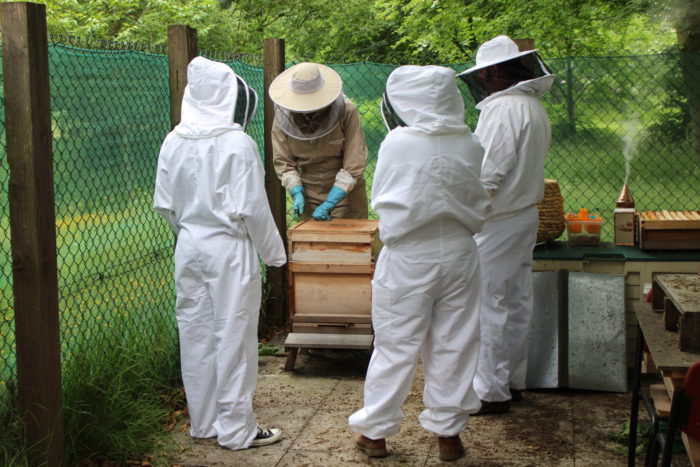
We have three beehive locations on campus - at St George's Field, Laidlaw Library and near the School of Earth and Environment (SOEE). To find out more see our beekeeping page.
Biodiversity Monitoring
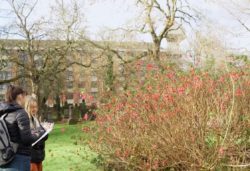 The award-winning Urban Biodiversity Monitoring Programme aims to understand how urban landscapes can be used innovatively to find solutions to problems and aid decision making for campus development.
The award-winning Urban Biodiversity Monitoring Programme aims to understand how urban landscapes can be used innovatively to find solutions to problems and aid decision making for campus development.
The programme is open to all and surveys can be completed easily whilst moving around the campus, or as a break from the indoors! A team of student biodiversity ambassadors lead group monitoring sessions during term times. To find out more or to join a session email biodiversity@leeds.ac.uk.
If you want to get involved in our monitoring, please see our guidance sheet on padlet. Additionally, all recordings can be made on our iNaturalist page.
Campus Tree Trail
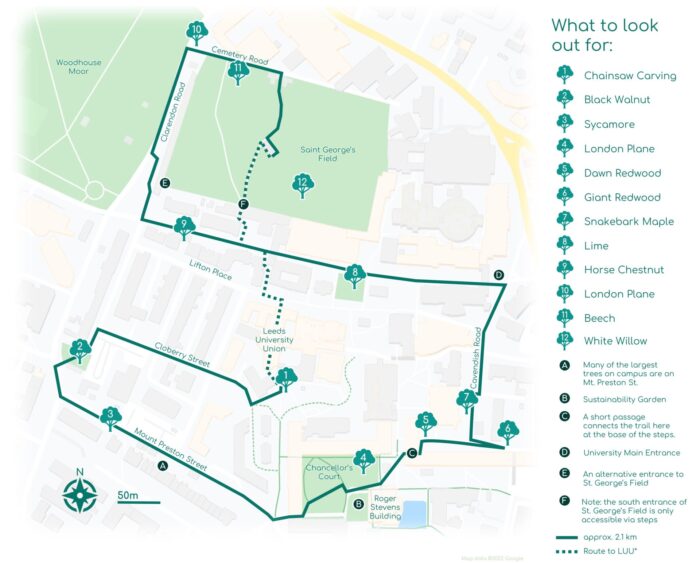
Created by The Leeds Ecosystem, Atmosphere and Forest (LEAF) Centre, in collaboration with the United Bank of Carbon and The University of Leeds Sustainability Service, our Campus Tree Trail celebrates the value of trees to the people of Leeds and our campus wildlife.
Designed to educate and entertain, the Tree Trail is fun for all ages. The route is wheelchair accessible and guides you around campus, providing interesting facts and exploring some of our most impressive trees.
You can find the details of the Tree Trail, including accessibility information, Google Maps directions, and a printable guide, on the Campus Tree Trail webpage.
Hedgehog Friendly Campus

The University of Leeds are signed up to the Hedgehog Friendly Campus initiative, run nationally by the British Hedgehog Preservation Society, and are currently at the Gold level of the programme.
Our Student Biodiversity Ambassadors lead the programme on behalf of the University and training and support is offered to anybody wanting to get involved.
If you'd like to find out more, or get involved, please email biodiversity@leeds.ac.uk
Peregrines on the tower
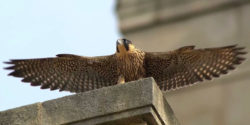
Peregrines have been using the Parkinson tower for a number of years now and in that time, ten chicks have been successfully hatched. We have two webcams on the nesting tray, which can be viewed by visiting our main peregrines webpage.
Roger Stevens Urban Pond
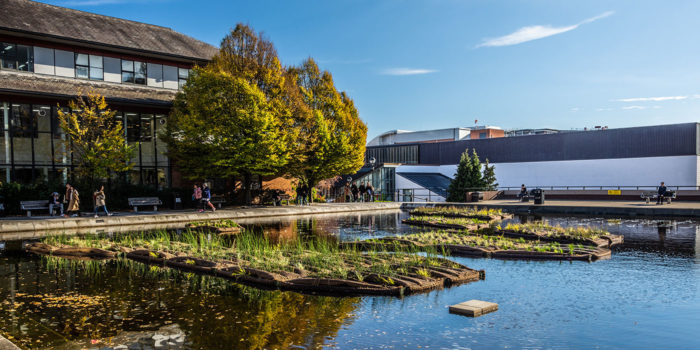
When the Roger Stevens building was first constructed, the site was designed to serve as a 'cooling pond' for the heating systems. Actually located on a rooftop, until recently, the pond was ornamental and in terms of biodiversity, sterile.
As part of a collaborative living lab research project, the space was developed to create floating islands and submerged planting that can withstand drought if maintenance on the roof should be required. Monitoring equipment in the pond ensures the habitat is kept optimal for visiting wildlife and supports research and teaching. In the short space of time since it was redesigned, we already have regular visits from ducks and herons. Bats have also been spotted in the summer evenings and many invertebrates are now present including dragonflies and damselflies. Fish were also installed and can be seen swimming beneath the waterlilies, providing a wonderful place to relax and engage with nature.
Sustainable Garden
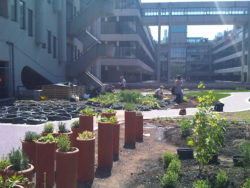
First created in 2013, the Sustainable Garden provides the opportunity for students and staff to be involved in growing food at the heart of campus, alongside learning, teaching, research and community engagement.
To find out more or to get involved, visit the Sustainable Garden webpage.
The Sensory Garden
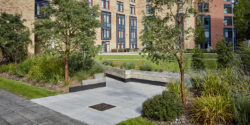
Located outside Charles Morris Hall the Sensory Garden has been designed to provide access for all with wheelchair access and guides for both the visually impaired and blind visitors.
The plants that have been installed are specifically chosen to help with people who are registered on the autism spectrum and provide year-round interest for all to enjoy the peace and tranquillity of the space whilst at the same time providing opportunities for wildlife to thrive on the city campus.
Blog posts
A step-by-step guide to Biodiversity Monitoring
Hannah Long, Student Sustainability Architect has created this beginner friendly guide to biodiversity monitoring. Monitoring can be done in your day-to-day life, helping you learn...
Biodiversity net gain on campus and beyond
Michael Howroyd, biodiversity lead for the University of Leeds, shares an update on the new Biodiversity Net Gain legislation, and what it means for us...
International Day of Women and Girls in Science: Sustainability Spotlight
This past Sunday 11 February saw the International Day of Women and Girls in Science (IDWGIS). As we’re spotlighting campus biodiversity this month, we’re celebrating...
News
Discover Campus: Exciting New 'Adventure Lab' Launched for Campus Exploration
The University of Leeds campus is now home to an exciting new ‘Adventure Lab’ initiative, which brings unique outdoor scavenger hunts, experiences, and games to...
University of Leeds shortlisted for four Green Gown Awards
The University of Leeds are finalists in the 2023 UK and Ireland Green Gown Awards, after being shortlisted for four awards. The shortlisted projects are Gair...
Bodington Fields hosts rescued crayfish
Endangered white clawed crayfish have found a safe haven in the pond at Bodington Fields natural flood management site, following the threat of crayfish plague...
United Nations Sustainable Development Goals
 We use the United Nations Sustainable Development Goals (SDGs) as a framework to guide our activity. Our work on biodiversity is linked to all of the SDGs.
We use the United Nations Sustainable Development Goals (SDGs) as a framework to guide our activity. Our work on biodiversity is linked to all of the SDGs.
Find out more about our impact on the SDGs.
